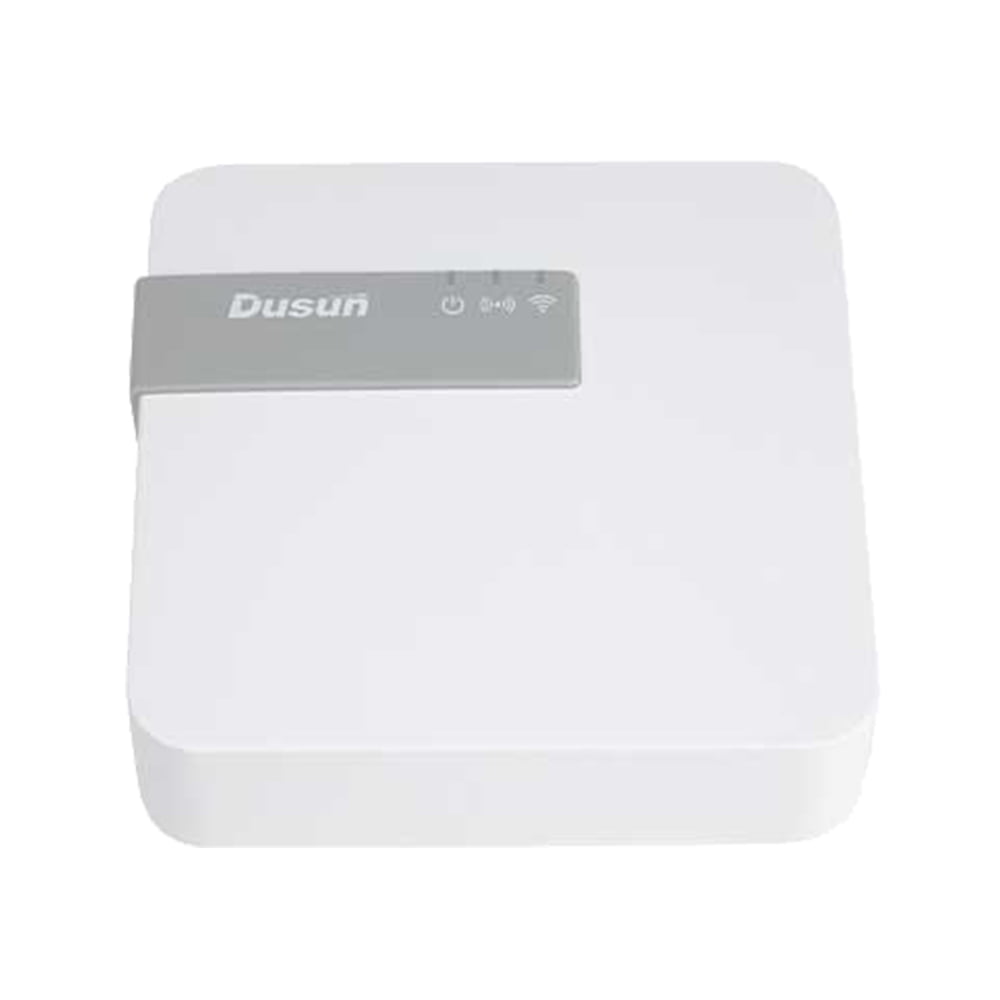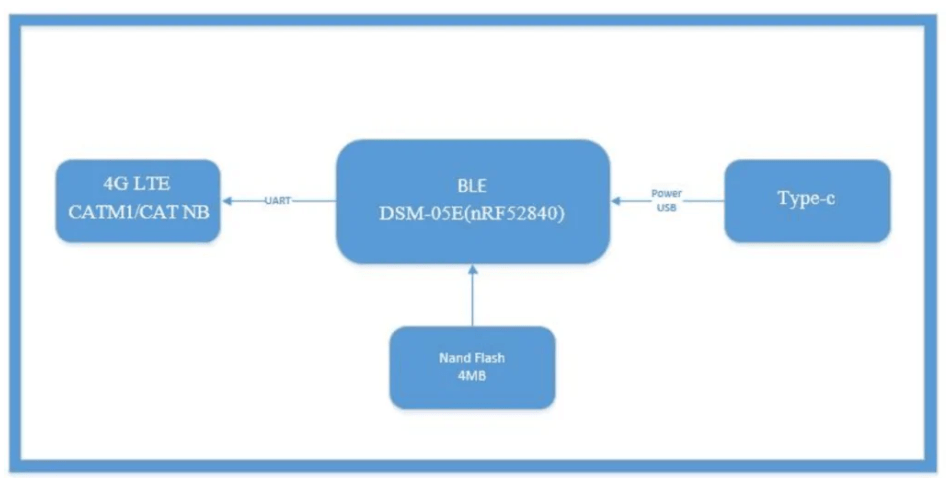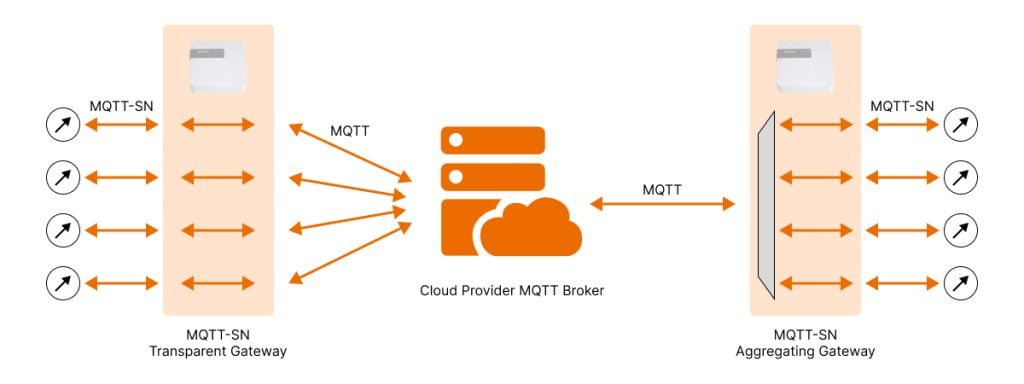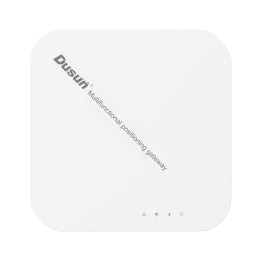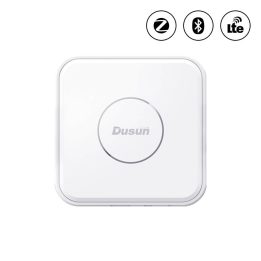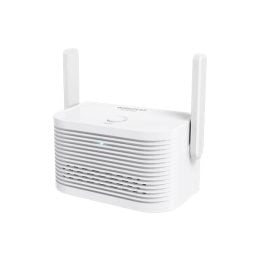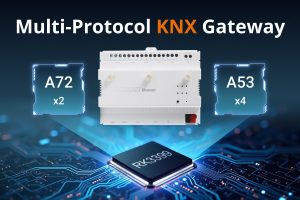Parameters of DSGW-094 Nordic Bluetooth Cellular Gateway
| CPU | Nordic nRF52840 |
| RAM | 256 KB |
| eMMC | 4MB Nand Flash |
| OS | Free RTOS |
| OTR | 0℃~55℃ Commercial Grade |
| Dimensions | 95x95x30mm |
| Protocols | BLE 5.2, LTE Cat M1, Cat NB, Ethernet |
| Flash | 1 MB |
| Power Adapter | USB type C |
| Installation method | Flat, Ceiling, DIN |
| SIM card | e-SIM /micro SIM Optional |
| Interfaces | RJ45, Type-C, 1 SIM Card |
| Operating Temperature | 0℃~55 |
| Certification | FCC, CE , IC, BQB |
Block Diagram of DSGW-094 Nordic BLE NB-IoT Gateway
What is Transparent Gateway?
Transparent gateways are IoT middle devices using transparent data transmission technology. The manner in which data is sent matters greatly in the Internet of Things since it directly impacts the reliability and efficiency of the entire system. Transparent transmission and non-transparent transmission are two of the words used to describe them.
Transparent transmission is the process of sending data to a recipient without subjecting it to any particular processing before transmission. In other words, the sender is simply responsible for transmitting the data to the receiver, and the recipient is then free to parse out the data information that was transmitted by the sender. This process is completely transparent.
By removing data processing, transparent transmission has quick transmission speeds, high effectiveness, and minimal costs, appropriate for situations requiring a high data transfer speed, such as data transmission between IoT devices in a household or an industrial setting.
LTE M vs NB-IoT, what's the difference?
LTE-M and NB-IoT are standardized, secure, and operator-managed in licensed spectrum. They are two well-liked cellular technologies created for IoT applications that are inexpensive, use modest data speeds, need extended battery lifetimes, and frequently operate in remote areas. However, while deciding which one is appropriate for your IoT applications, there are distinctions between them. Read more on NB-IoT vs LTE-M to know details and how to choose.
As for DSGW-094 IoT gateway hadware, LTE-M is a preferable solution regarding managing firmware upgrades that are anticipated throughout the lifespan of the devices. Meanwhile, LTE-M gateway is a preferable mobility option because it won’t disrupt existing data transfers and is compatible with speech technologies and speech over LTE.
In some situations, NB-IoT is advantageous. It is ideal for indoor IoT applications with thousands (or more) of devices since it is scalable, secure, and reasonably priced. In addition to having even greater range and less power usage than LTE-M, NB-IoT devices sometimes have battery lives of over ten years.
Dimensions and Package of DSGW-090 Wireless Home IoT Gateway
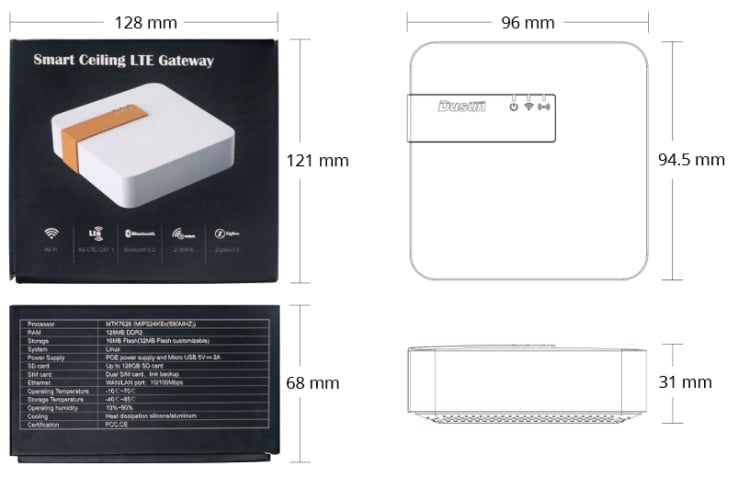
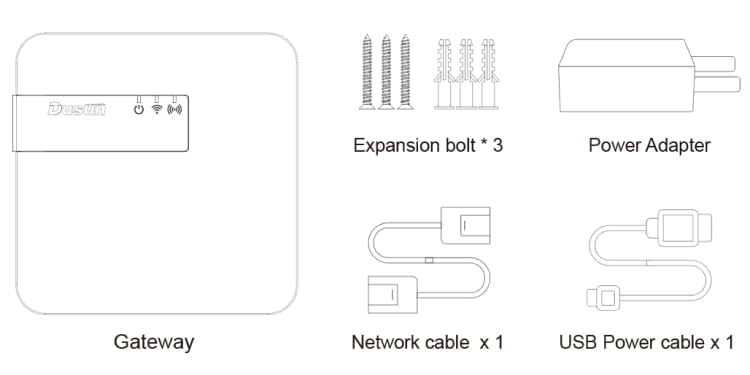
| Model | Wi-Fi 2.4G | Bluetooth 5.2 | Zigbee3.0 | LTE Cat1 |
|---|---|---|---|---|
| DSGW-090-1 | ● | ● | ● | |
| DSGW-090-2 | ● | ● | ● | ● |
| DSGW-090-3 | ● | ● | ||
| DSGW-090-4 | ● | ● | ● |
| Model | Wi-Fi 2.4G | Bluetooth 5.2 | Zigbee3.0 | LTE Cat1 |
|---|---|---|---|---|
| DSGW-090-2 | ● | ● | ● | ● |
Applications of DSGW-094 NB-IoT Gateways
FAQs of DSGW-094 LTE M Gateways
What is a non-transparent gateway? Do you have recommended one?
It involves gateway devices using non-transparent transmission technology. Non-transparent transmission involves the fact that data must first be encrypted or compressed before being transferred, as opposed to transparent transmission. It is typically necessary to be implemented using specific protocols and algorithms. For this reason, we recommend DSGW-210 IoT gateway hardware for non-transparent transmission. It uses ARM-based processor (RK3328) with customizable memory storage (RAM up to 2GB and eMMC up to 32GB), allowing you to programme on it. In addition, it has rich IoT protocol choices and can be used as an IoT edge transparent gateway as well.
The benefit of non-transparent transmission is that it has great data security and is difficult for hackers to target. Additionally, non-transparent communication enables more sophisticated data processing and transmission techniques.
What is NB-IoT gateway?
NB-IoT gateway is a type of LPWAN gateways. NB-IoT is a radio technology standard used to accommodate a variety of cellular devices and services developed by the 3rd Generation Partnership Project (3GPP). It coexists in licensed frequency bands including 700MHz, 800MHz, and 900MHz alongside the GSM and LTE. However, NB-IoT restricts the data rate to 150–250kbps and the bandwidth to a single 180kHz narrow band.
NB-IoT allows devices to have a lengthy standby time, efficient connection, and highly thorough indoor cellular data coverage. With more and more emerging IoT applications and embeded IoT devices calling for low-power consumption, ease of use and cost-efficiency, DSGW-094 NB-IoT gateways can give full play to IoT-based metering, industrial 4.0 automation, smart parking, medical wearable devices, etc.
Is there a ZigBee standalone ethernet based hub that is compatible with Home Assistant?
Sure, Dusun IoT has ZigBee Ethernet gateways and support Home Assistant. It is called DSGW-210-HA Zigbee Ethernet Gateway. This Home Assiatant Zigbee gateway allow users to use Zigbee and KNX to control Zigbee light. With 2GB RAM, up to 64GG eMMC, and an extra TF card up to 128GB, it allows users to work offline and independently from any cloud-based services.









